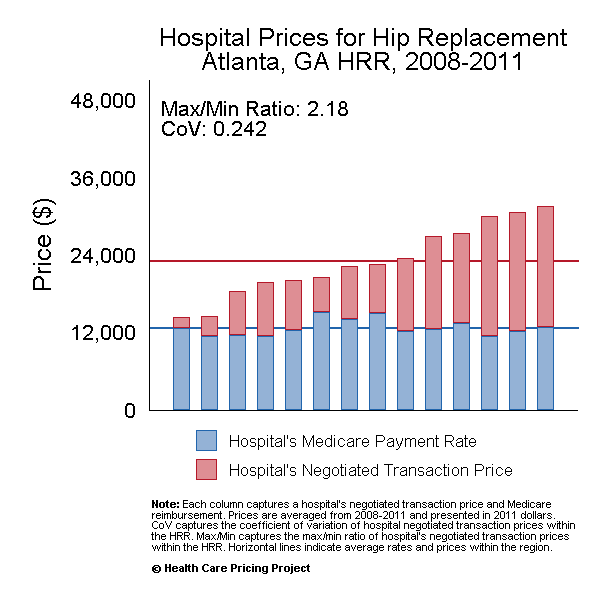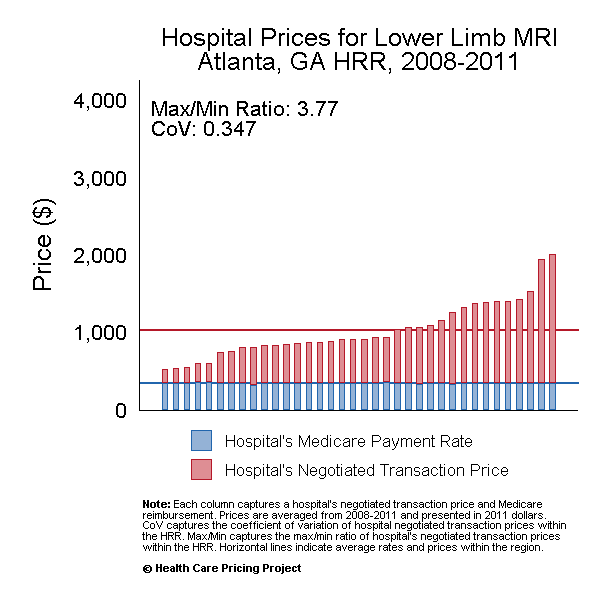Introduction to U.S. Hospitals and Prices
Ian McCarthy | Emory University
Outline for today:
- History of hospitals in the US
- Definition of hospital “price”
- Key facts about US hospital prices
Some History
Timeline of hospitcal care in the U.S.
Before 1900: Just don’t go to the hospital! (at least in the U.S.)
- mainly charity care
- hospitals were a learning experience for physicians
Early 1900s: big safety and technological improvements
Mid 1900s: huge growth, especially in wealthy and urban areas
- Medicare and Medicaid in 1965 (Social Security Act)
- Originally paid on a “cost-plus” basis
How does this play out now?
- Predominately not-for-profit
- Associations with universities, religious affiliations
- Concentration in urban areas, limited access in rural areas
- Opaque pricing and little or no cost management
Recent developments
- Major technology integration over past 30 years
- Move toward quality improvement programs, pay-for-performance, and mild versions of capitation
- Move toward increasing transparency in prices
- Significant reductions in competitiveness
- Increasing vertical integration (hospitals owning physician practices or insurers owning hospitals)
Why does any of this matter?
- As we know, we now spend a lot on health care in the U.S., and a big part of that is very high health care prices (and a big part of that is hospital prices)
- Must understand hospital markets and hospital pricing if we want to address healthcare spending
What is a hospital’s price?
In practice, it’s a negotiation with insurers
- Hospitals can’t set price on their own
- Bargaining problem where insurer and hospital split some total amount
- Agent/entity with higher bargaining position will get larger share
Defining characteristic of hospital prices and services: it’s complicated!

Lots of different payers paying lots of different prices:
- Medicare fee-for-service prices
- Medicaid payments
- Private insurance negotiations (including Medicare Advantage)
- But what about the price to patients?
Price \(\neq\) charge \(\neq\) cost \(\neq\) patient out-of-pocket spending
Different prices for different payors

Different notions of “price”
Fee-for-service
- price per procedure
- percentage of charges
- markup over Medicare rates
Capitation
- payment per patient
- pay-for-performance
- shared savings
Key Facts on Hospital Prices
We’ll get into the real data later in this module, but for now…a few facts:
Hospital services are expensive and vary across/within areas
Hospital markets are NOT competitive
Hospital prices are NOT transparent
Hospital prices in US
- Recall the high spending on healthcare in US relative to other countries. Health System Tracker
- This is largely driven by higher prices. Health System Tracker
Price variation


Discussion questions
- Why are hospital prices so high?
- Why do they vary so much?
- How might factors like market competition, price transparency, or hospital ownership (non-profit vs. for-profit) play a role?
Role of Hospital Ownership
- For-profit hospitals tend to have higher prices than not-for-profit hospitals
- Thoughts on why?
- Decent evidence that not-for-profit hospitals still act with strong for-profit motives
Role of price transparency
- How does the lack of price transparency impact patient behavior and healthcare costs?
- Would making hospital prices more transparent reduce healthcare spending, or would it lead to unintended consequences?
Role of price transparency
- Price transparency can increase prices by facilitating collusion
- Firms observe each other’s prices and adjust to match higher competitors’ prices rather than competing to lower them
- Undermines competition, as firms coordinate tacitly by setting prices at similar, often higher, levels
- This could play out in healthcare as well, but it’s not guaranteed
Role of competition
- Parkview Health in Fort Wayne, IN offers a good case study of high prices and lack of hospital competition
- See article from The Guardian
- Listen to audio overview here